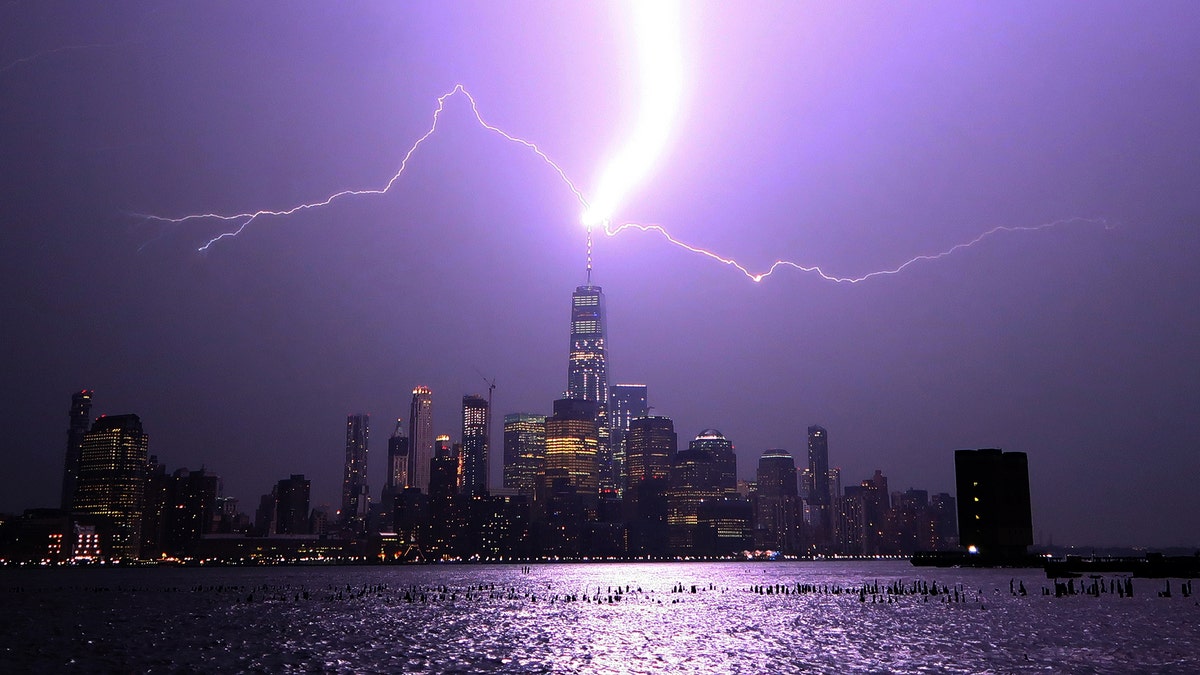
HOBOKEN, NJ - AUGUST 22: Lightning lights up the sky over lower Manhattan as a bolt strikes One World Trade Center in New York City on August 22, 2017 as seen from Hoboken, New Jersey. (Photo by Gary Hershorn/Getty Images) (FOX News/Gary Hershorn)
Deaths from from lightning strikes hit a record low in 2017 in the United States, according to a new report.
There were 16 lightning-related fatalities in 2017, breaking the previous low of 23 deaths in 2013, according to the National Weather Service (NWS). The records go back to the 1940s, when farmers using tractors and other farm equipment made up a large proportion of the 200 to 400 people who died from lightning every year, Live Science reported previously.
"While we don't like to see any lightning deaths, the continuing downward trend in yearly fatalities is encouraging," John Jensenius, a NSW lightning safety specialist, told reporters in an email. [Images of Lightning Unfolding, Frame by Frame]
With five deaths, Florida had the most lightning-related fatalities, followed by Alabama (three), and Colorado, Texas and North Carolina (two each). Ohio and Puerto Rico each had one lightning-related death.
The year 2017 also set a record for fewest U.S. male deaths (15) and female deaths (one) from lightning in a year. The victims' ages ranged from 0 to 82, although six of the fatalities were in ages from 30 to 39, Jensenius said.
Half of the people were doing recreational activities outside — including walking on the beach, horseback riding, fishing, boating, camping and golfing — before lightning struck them. July was the deadliest month, with eight lightning-related fatalities, followed by August, which had three.
An analysis of lightning victims from 2006 to 2016 showed that 352 people were struck and killed by lighting in the United States, including 39 in 2016.
"The common belief that golfers are responsible for the greatest number of lightning deaths was shown to be a myth," Jensenius wrote in a report, noting that in the same period, from 2006 to 2016, in which lightning killed nine golfers, it claimed the lives of 33 fishermen, 20 people on the beach, 18 campers, 16 boaters and 12 soccer players.
The NWS lightning safety education and awareness program, which started in 2001, has "undoubtedly contributed to the reduction in U.S. lightning fatalities," Jensenius told reporters. What's more, cardiopulmonary resuscitation (CPR) and automatic external defibrillators (AEDs) have saved the lives of people hit by lightning, he said in the report.
However, many lightning survivors report having lifelong problems, including memory issues. "Oftentimes, they have trouble remembering old things, or storing new information and then recalling that information," Jensenius told Live Science previously.
Original article on Live Science.